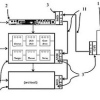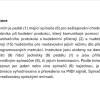Pedal for controlling musical instruments
Technology description
| The name of the technology: | Pedal for controlling musical instruments |
|---|---|
| Challenge: |
During live music performances, musicians need to use more sounds and effects of their musical instruments. This is possible with special accessories and accessories. One of them is a MIDI pedal, which is widely used by guitarists to switch between sounds and effects. The so-called instructions that the MIDI protocol transmits can be: switching to a different sound, changing the volume, changing the length of the reverberation time, information about the pressed key on the keyboard etc. The purpose of pedals for controlling musical instruments with the feet is to keep the musician's hands free and play continuously. Pedals for controlling musical instruments usually have several mechanical switches, ergonomically arranged for pressing them with the foot. The disadvantages of today's pedals are: - the switches protrude above the pedal body; - they have an insufficient number of sounds; - in the case of a large number of sounds, the pedal is large. |
| Description: |
The essence of the presented solution is that the switches of the music pedal are made of optical sensors. The optical sensors do not protrude above the pedal in any way and it is much easier to move the foot between them, including stepping on multiple switches at once. Compared to available solutions, the pedal of the proposed solution is lighter and optical sensors are more reliable in terms of long-term use compared to mechanical switches (due to the absence of mechanical components, among other things). To ensure that the optical sensors do not respond to all stimuli, especially unintentional ones (e.g., briefly covering them with a foot when stepping between switches, etc.), the presented solution includes a control means for confirming the switching of the optical sensors. The invention also includes a control unit, which is signal-connected to the control means, from which filtered signals of intentional stepping on the sensors arrive. An equally important component is the MIDI converter, which is signal-connected to the control unit for converting status instructions from the control unit to a MIDI signal, while the MIDI converter is communicatively connected to the MIDI connector. The term “status instructions” means that the degree of coverage of the optical sensors (one or a combination of several optical sensors simultaneously) is evaluated and converted into a corresponding command. The presented solution can switch multiple optical sensors at once. This means a greater number of sounds with fewer switches than in a classic mechanical design. This again leads to the advantage that the invented pedal is smaller and lighter. This advantage is completely unique among known MIDI pedals. |
| Commercial opportunity: | A pedal for controlling musical instruments is meant to be used in music production. |
| IP protection status: |
CZ Patent nr. 309832. Utility pattern nr. 37010 |
| Development status: |
Phase 2Corresponds with TRL 3 and TRL 4 Feasibility study. There is a realistic design of the technology and the initial tests in the laboratory are leading to the specification of the technology requirements and its capabilities.
|
| Partnering strategy: | Co-development Collaboration licensing |
| More information: | |
| Images: | |
| Categories: | Electrical Engineering |
| Institution: | University of South Bohemia in České Budějovice |
| Owner of a technology: | Jihočeská univerzita v Českých Budějovicích |

